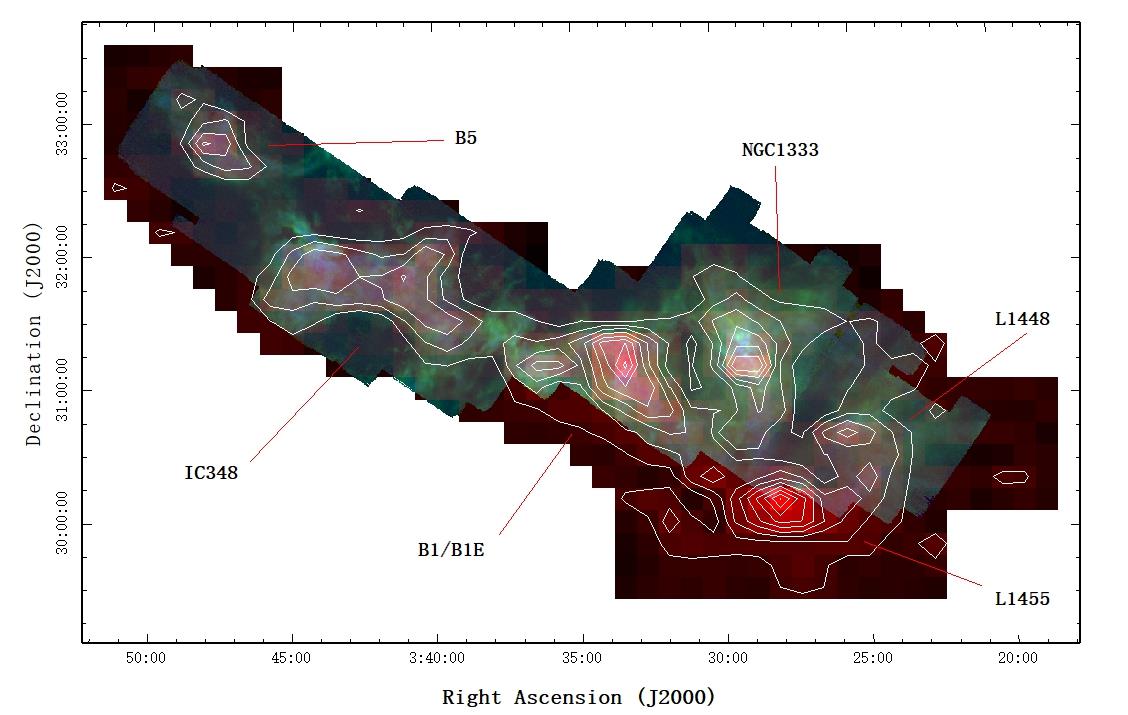Recently, Umut Mahmut, a master’s student from the star formation and evolution research group of the Xinjiang Astronomical Observatory (XAO) of the Chinese Academy of Sciences (CAS), and his collaborators utilized the NanShan 26-meter Radio Telescope (NSRT) at Nanshan Station to conduct extensive H2CO (formaldehyde) spectral line observations of the Perseus molecular cloud. The study also involved a detailed analysis in conjunction with far-infrared data from the Herschel satellite and CO spectral line data from the Five College Radio Astronomy Observatory (FCRAO) 14m telescope.
The results were published in Monthly Notices of the Royal Astronomical Society (MNRAS, 2024, 528, 577).
The study focused on the Perseus molecular cloud, a typical region for the formation of intermediate-mass and low-mass stars and a subject of extensive molecular line observations in the past, and the researchers employed the NSRT for a thorough large-scale H2CO observation of the Perseus molecular cloud for the first time. The study also involved a detailed investigation in comparison with H2 and dust temperature maps of Herschel and CO spectral line data from the FCRAO telescope.
H2CO molecules are one of the earliest discovered interstellar organic molecules. The 6cm absorption line of H2CO exhibits the characteristic "negative maser" feature in the majority of observed scenarios, representing an extremely low excitation temperatures. Apart from its stable abundance and the regions it traces, this spectral line serves as an excellent probe for studying dense, low-temperature environment within molecular clouds. However, not many international studies have been conducted on complete H2CO observations of giant molecular clouds.
The Results indicated a strong correlation between the detected 6cm absorption line of H2CO and the emission lines of various isotopes of carbon monoxide. The H2CO abundance derived from the 6cm absorption line remains relatively stable across the entire molecular cloud scale. However, there is a discernible decreasing trend in H2CO abundance between different subregions of the molecular cloud as stellar formation activity intensifies. In addition, various parameters of the 6cm absorption line conform to a log-normal distribution, suggesting that large-scale turbulent motions dominate the entire Perseus molecular cloud.
This research suggests that large scale H2CO mapping observation for the giant molecular cloud is helpful to derive its physical properties, reveal its sub-structures and trace the star formation activities in different stages.

Contact: Umut Mahmut
Xinjiang Astronomical Observatory, Chinese Academy of Sciences
Email: umut@xao.ac.cn
Article link: https://ui.adsabs.harvard.edu/abs/2024MNRAS.528..577M/abstract
